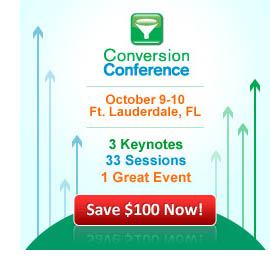 In our recent book on online marketing for professional services, we identified the online techniques ranked most effective by high growth firms. At the top of the list were SEO, web analytics, blogging, valuable content and email marketing. When we asked a panel of distinguished online marketing experts the same question, we received very similar results. There was one interesting difference, however, in the top five ranking. The experts placed “usability and A/B testing” in the #4 slot. High growth firms placed that technique much further down, in the middle of the rankings.
In our recent book on online marketing for professional services, we identified the online techniques ranked most effective by high growth firms. At the top of the list were SEO, web analytics, blogging, valuable content and email marketing. When we asked a panel of distinguished online marketing experts the same question, we received very similar results. There was one interesting difference, however, in the top five ranking. The experts placed “usability and A/B testing” in the #4 slot. High growth firms placed that technique much further down, in the middle of the rankings.
After reviewing the data, we believe usability and A/B testing represent a real opportunity for high growth firms to achieve even better results — a rich frontier where few firms have gone. But what's the story? And what's the payoff?
Usability testing is a process for exploring how people interact with your website, landing pages or any other online touchpoint. If you get it wrong, some people will get frustrated and click away. They may not be able to find the information they are looking for. Or they get sidetracked and never complete the task they came for. Either way, it's a lost opportunity — and potentially a lot of lost business.
A/B testing is related, but instead of testing the way things are, it offers up 2 (or sometimes more) ways of experiencing a page or message. For instance, one web visitor to your website might encounter a page with a headline that reads, “Check out the latest demo from Exekatek.” A second visitor might see a different headline: “See how easy executive software can be. Watch a free demo.” Which will perform better? A/B testing will give you a conclusive answer. By serving up different versions of a page to web visitors, you can quickly and easily determine which version gets the best response (in this case, which gets more video views). In this way, you can incrementally improve the effectiveness of key pages on your website and experiment with new approaches.
Both of these techniques can significantly — and sometimes dramatically — improve your conversion rates on your website, landing pages and email campaigns. Improvements of 20%-50% are not uncommon, and sometimes the results are far better.
So why are so few firms doing usability and A/B testing? I don't have a definitive answer, but I have a couple of ideas.
First, most professional services firms are just coming to terms with the Internet revolution. They are struggling to master the basics. Implementing an effective content marketing or email marketing program is challenging enough. These firms simply don't have the time or resources to get more sophisticated.
Second, usability and A/B testing are a little more abstract than other types of online marketing. It's very easy to say, “We just redesigned our website and people can use it just fine.” Which begs the question, “But could it be better?”
Third, the way these two techniques are implemented is more obscure and hands-on than some other online tools. A/B testing, for instance, may require custom coding and/or digging deep into Google's Webmaster Tools. It also works best when done on an on-going basis. Usability testing requires watching people navigate sites as they try to achieve specific tasks.
But for any firm that is serious about growth, these are small obstacles. Usability and A/B testing are designed to take something that works well and make it truly exceptional. And isn't that what every firm wants?
By the way, if you are interested learning all about usability, A/B testing and conversion optimization from the world's top experts, I urge you to check out the Conversion Conference being held October 9-10 in Ft. Lauderdale, Florida. Here's a link to the Conversion Conference website where you can get a special discount. There's no better opportunity to learn from the best!


